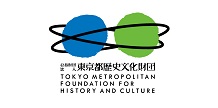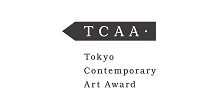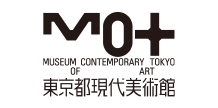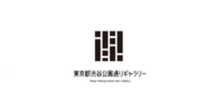Nine Fumiko YAMAMOTO-MASSON
- TOP >
- Archives >
- Residency Program >
- Nine Fumiko YAMAMOTO-MASSON
Research Residency Program
update: 2023.5.18
Nine Fumiko YAMAMOTO-MASSON
| Participating Program | Research Residency Program |
|---|---|
| Activity Based | Berlin |
| City | Tokyo |
| Period | 2023.5 - 2023.7 |
Purpose of the residency
My artistic research project explores contemporary echoes of Asakura Setsu’s paintings of the 1950s–60s that illuminate societal change in postwar Japan, the modernisation of Tokyo, the presence of biracial children left behind by the US occupation (often ostracised and growing up in orphanages). Asakura’s beautiful portrait studies and stunning large paintings understand that they too embodied a changing Japan. With her art, she was a witness and social commentator, valorising the history of transformation and diversity in Tokyo. My research will also focus on Asakura’s work in underground experimental avant-garde film in the 70s and 80s. I will document the research process through artworks of my own.
Plan during the residency
- Conducting research through typical (academic, archival, journalistic) methods as well as experimental artistic methods.
- Research on Asakura Setsu’s artist family (from Taito-ku) and her early work, taking photographs, filming, drawing the locations; while also researching the situation of biracial children in the 1950s–60s, and the modernisation of Tokyo ahead of the 1964 Olympics.
- Interviews and exchanges with other multiracial people with a Japanese parent (like me and the children painted by Asakura Setsu) of many generations, about their perspectives on diversity in Japan, past, present, and future.
- Archival research also in film archives about Asakura’s work in avant-garde film and in theatre.
- Developing artworks (drawings, paintings, installation, video) and writing as part of my artistic research project, inspired by and responding to Asakura’s painting and film work and the themes therein.
Activities during the residency
I began by visiting the house and area that Asakura Setsu grew up in in Yanaka, Taito-ku, and research more about her life and milieus she was embedded in in the early 1950s, to get a sense for the context in which the painting of hers that forms the departure point of my research project was created. I researched the “reportage painters” of the 1950s, to refine my hypothesis of that this painting of Asakura’s offers a potent reading as social commentary, not only in the subject matter depicted but also in the way it was depicted, how it reached the public, what reactions it sparked, what discussions it was part of.
I researched and identified other artists who represented so-called “konketsuji” and their parents in the 1950s–70s, then expanded my research to popular media, TV, and cinema. All of my primary research sources were in Japanese. I tried to gain an overview of existing scholarship (there isn’t much) in Japanese, English, French, and German (the languages I can work with).
I met anti-racist activists, scholars (people I already knew, people I had been introduced to, people I had reached out to), and community members (multiracial people with one Japanese parent) to get a sense for the state of discussion of my research topic, which allowed me to draw the conclusion (as confirmed by everyone I met) that there is very little knowledge about and discussion of this topic, and that the little that does exist is either inaccessible (too academic) or harmful (perpetuating discriminatory tropes). I read many academic papers and books relevant to this topic and was in active discussions (over email or in person) with scholars whose work touches on this topic. Throughout this process, I took notes as an academic, as an artist (drawings, poems, writing,..), and as an individual whose life has been shaped by the topic I am researching.
Central to this process was a constant deep reflection on the process of community-based artistic research, on suitable methodologies for my project (e.g. autoethnography in dialogue with other autoethnographies), on how to highlight already existing research / art, and on how to make sure that the art I create and knowledge I articulate as part of the research centers the community at the heart of this project and serves as an invitation for the public to engage. The artworks and texts I created, objects, images, footage and sound I collected – a selection of which I presented in the Open Studio installation and talk – document this process.
During my residency, I visited many locations in Tokyo and Kanagawa Prefecture that are central to the context of Asakura’s painting, to the artistic milieus she was part of, and to the topic and people of her painting, i.e. I conducted field research, always taking notes, photos, footage, sound recordings, sketches, drawings, speaking to people (recording our exchanges if they gave me permission). I interviewed several researchers. Upon my return to the TOKAS studio, I would organise these field research findings, create artworks and text based on them, research new leads, … Due to scheduling conflicts I wasn’t able to interview everyone I contacted or visit all locations and archives I wanted (e.g. due to summer breaks or absences), but I plan to do so next time I am in Japan.
For the Open Studio, I selected a few of the many drawings I had made during the residency period, based on archival photographs, and turned them into paintings; and shared selected footage (of locations and interviews) I took, presented some of the objects and archival photographs I collected, creating a sort of multimedia scenography – a nod to Asakura’s later career as an artistic director for avant-garde films and renowned theatre scenographer.
Outcome of the residency
Over the course of the two and a half months, I managed to conduct extensive fundamental research into my research topic, including review of literature, field research, interviews, and more, and to refine my artistic methods of research. Since the time at my disposal was relatively short for such a complex topic, it forced me to pursue different strands of research at the same time, to pursue different leads at the same time, which created unexpected but very fruitful juxtapositions and through which important interrelations became clear which I would otherwise not have noticed as early. I was able to develop a body of artworks (paintings, installation, drawings, videos, …) that act as interfaces to this research topic.
It quickly became obvious that the artistic research I had had in mind when I applied in 2019 was too big to complete in the two-and-a-half-month residency period – because I had had 3 years of pandemic delay to do preliminary research into the sociopolitical and art historical context of Asakura’s painting and her life and work and the contemporary afterlives –, and so I rearranged my plan so that this research residency would constitute a first stage of the project, which I definitely plan to continue.
This gave me a lot of clarity and focus in how to engage with the complex and sprawling topic, sharpening the conceptual angle of Asakura’s painting as an entry point, lens, and storytelling device, and defining a form in which I could share this first stage of my project (i.e. everything I was able to do during my research residency at TOKAS) in the Open Studio. Hence, thanks to the TOKAS research residency, I was able to develop a solid first foundation for my research project. During the residency, I met many people, including scholars, artists, researchers, writers, and more, who expressed their deep interest in this project, who expressed appreciation for the work I presented at the open studio, and encouraged me to show this work again elsewhere and continue the project, as, they said, this topic is very relevant for contemporary Japanese society.
There are many things I did not have time to do however, e.g. several interviews with experts, visits to locations (also shooting), archives, meetings with survivors, also in other parts of Japan, for lack of time and money.
I definitely aim to continue this project, to conduct the interviews, visits etc. that I did not have the time and resources to do while on this residency and to pursue the many leads I gathered, with the aim of turning it into a multichannel essay film (ideally screened in a kind of “set design”). For this, I am trying to find funding and a way to return to Japan.
There are very few things I would have done differently during the residency. Generally I am very satisfied. In retrospect, I realize that I should have started contacting institutions and people before going to Tokyo, since some of them were gone during the summer break (for example I wasn’t able to visit an important location due to their long summer break, and there are academics I wasn’t able to meet as they were busy during the end of the semester and then left Japan as soon as the summer break started). I think I worked as much as I possibly could and made maximum use of my limited time (given my limited resources).
However, I think that a particular challenge of my research residency was the fact that it had been delayed again and again due to the pandemic (I applied in Summer 2019 and was only able to do the residency four years later, in May 2023). The delay also meant that over the course of two years, I did a lot of the background research already (i.e. reading etc.) that I had planned to do during the residency. This equipped me with 2 very valuable knowledge, but made my project during the residency much more complex than if I had started it with less contextual knowledge. This allowed me to go deeper and work in a more nuanced way, but it was also very exhausting, since I realized that my project had gotten more ambitious than what was possible to do in the two and a half months of the research residency. However, I am quite satisfied with what I managed to do during the research residency.
There were more than one most impressive episodes during my residency – most of all, especially given how touchy and disturbing my research topic is, I was very touched by the kindness and generosity of some people I met who recognized the importance of the topic I am researching, the societal issues it points to, and the importance of situating this topic in historical context. Two researchers were very generous in sharing their research with me in interviews; another one I didn’t manage to meet yet but hope to interview her next time I am in Japan, and I was very impressed and grateful by the help of one person who helped me a lot with translation/interpretation.
One of most impressive event of my research project during my residency was meeting Tamura Yasuji-san, a retired historian and high school teacher in his 80s living in Yokohama, who invited us to his house for the interview, and very generously shared his knowledge with me that he had gathered over decades, encouraging me to continue researching. Thanking him, I promised him that I will do my best.
And probably the most memorable aspect of my residency is when I realized exactly how my research project was connected to my family history, and finding out things about my family that I didn’t know before.
I knew that this residency at TOKAS was going to be very important for me as an artist and personally – I knew that I would learn a lot in a way that was going to expand my thinking – but finding out such important things about my family and myself was a surprise. Yet, it made sense, and provided even more solid grounding, context, and motivation for my project.
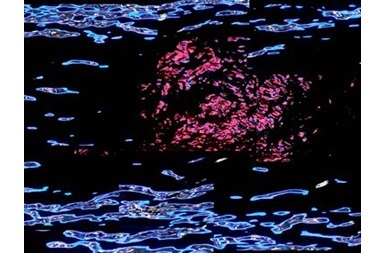
Still from video, Half of Truth, 2023
©Nine Fumi Yamamoto-Masson
Open Studio 2023-2024/July
Photo: MAETANI Kai
Open Studio 2023-2024/July
Photo: MAETANI Kai
Open Studio 2023-2024/July
Photo: MAETANI Kai
Open Studio 2023-2024/July
Photo: MAETANI Kai
Open Studio 2023-2024/July
Photo: MAETANI Kai




